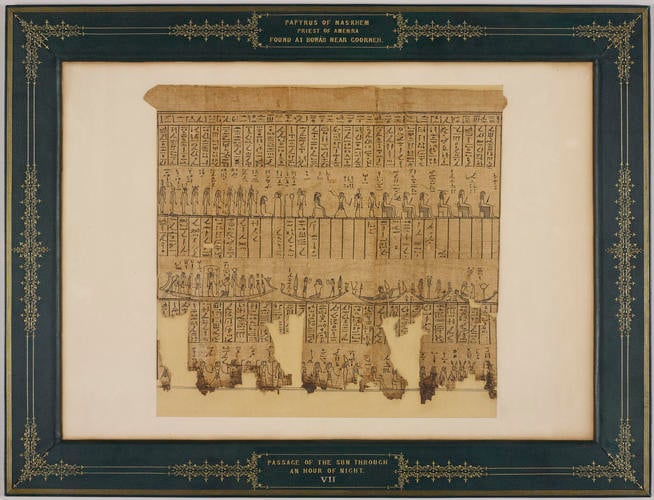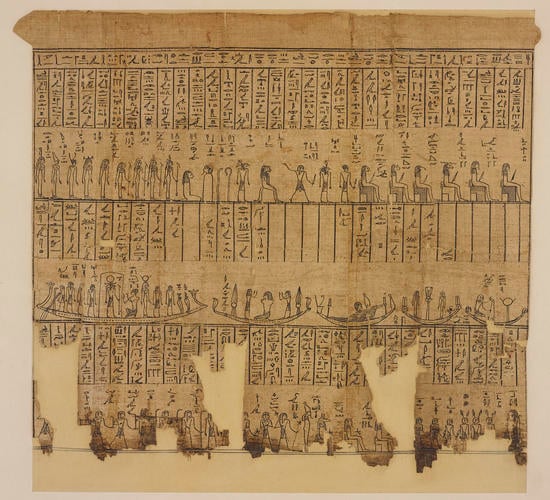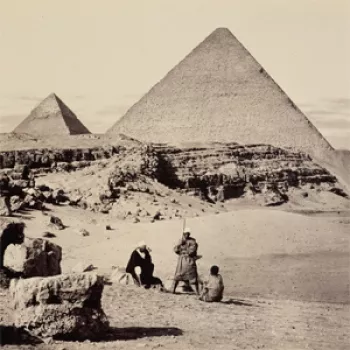Section of the papyrus belonging to Nesmin, with the second hour of the Amduat c.300-275 BC
61.5 x 80.5 cm (mount) (whole object) | RCIN 1145265
-
Section of the papyrus belonging to ‘God’s Father and Prophet of Amun-Ra, King of the Gods, Nesmin, born of the Lady of the House, Sistrum-player of Amun-Ra, Tasherit(en-ta)ihet’ with the second hour of the Amduat (see also RCINs 1145259-66)
The Amduat (literally ‘that which is in the netherworld’), also known as the Book of the Hidden Chamber, is a funerary text that describes the journey of regeneration of Ra, the Egyptian sun god, through the 12 hours of the night from sunset (symbolising death) to sunrise (symbolising rebirth). The text starts appearing in royal tombs from around 1500 BC, and the two most notable examples are perhaps those painted on the walls of the burial chambers of Thutmose III (1479–1425 BC) and Amenhotep II (1427–1400 BC) in the Valley of the Kings, Thebes. It represents an important stepping stone in the literary tradition of ancient Egypt, being the model for later Books of the Afterlife, and it maintains its relevance well into the Graeco-Roman era.
The main aim of the text is to offer a description of the netherworld so that the deceased, as well as the living, are able to gain familiarity with what to expect when their journey into the afterlife begins. Knowledge of the secret paths of the netherworld offers protection to the deceased from the dangers and threats he/she may encounter; the text shows the obstacles and demons that could obstruct a safe passage through the hereafter as well as the deities and beings able to assist and help the deceased towards the completion of the journey of regeneration.
In the second hour, again divided into three registers, Ra, by passing through the gates called 'he who devours all', enters the actual netherworld. In his usual solar barque (Mesektet), the god sails through 'Wernes', a fertile, watery region rich in lush vegetation, where he is greeted by gods and other inhabitants of the netherworld on both banks of the river, including six judges, seated and each carrying a knife, on the far right of the upper register. Ra's barque is preceded by four other boats carrying provisions and symbolic signs.Provenance
Excavated in Egypt at the Dra' Abu el-Naga' necroplis, near Deyr el-Bahri, part of the larger Theban necropolis, 1862 by Mustafa Aga Ayad, consular agent to the United Kingdom. Acquired by King Edward VII, when Prince of Wales, during his 1862 tour of the Middle East.
-
Measurements
61.5 x 80.5 cm (mount) (whole object)
38.8 x 45.0 cm (sheet of paper)
86.5 x 67.0 cm (book in box)
Category
Alternative title(s)
Passage of the sun through an hour of the night ; 7. (Papyrus of Nas-Khem Priest of Amen-Ra).












